Guide for Industrial Instrumentation Interview Questions and Answers. This article provides Interview Questions for Instrument Engineers to crack the job.
Instrument Engineers Questions
1. Why do we use pipelines for transmitters in steam service and tubes in any other service?
A) Pipe as well as tubes can be used for steam line transmitters. However pipe walls being thicker provide more corrosion allowance.
B) For steam services, with high temp and pressure needs IBR standard. Max. Working pressure is 153 kg/cm2 at 38 degC for 1/2” O.D tube as per design standard. So tube is not suitable.
2. What is auto cut in of the pump?
Auto cut in of pump refers to automatic startup of a standby pump when a running pump stops or when level in a vessel being emptied becomes high.
3. What is Zero speed?
In some equipments a speed below a threshold value but close to zero is referred to as zero speed.
4. What is the purpose of measuring dissolved oxygen?
Dissolved oxygen is measured in boiler feed water for addition of dosing compounds to remove oxygen to avoid corrosion in steam boilers. In wastewater plants it is measured to estimate quality of effluent. (oxygen demand)
5. What is SPDT relay?
The term SPDT refers to single-pole-double-throw relay contact.
6. How Cold Junction Compensation is done for thermocouples?
Cold junction compensation is done for temperature measurement using thermocouples. The t/c output is a function of temp. at hot junction as well as temp. at ref. junction.
In order to measure hot junction temp. accurately, it is necessary to measure ref. junction temperature and compensate for its variation.
This is done by modern digital instruments, by using a ref. junction temp. sensor to measure cold junction temp., and compensating for it using a look-up table corresponding to the t/c.
7. What is differential tracking system?
In differential tracking system set point changes with change in process value in one direction. E.g. there is trip of OMS in MEG plant on high oxygen flow (with diff tracker). Trip value is say 10% more than normal process value.
Now suppose process value is reducing than trip set value will also reduce keeping 10% difference. If process value increased than trip set value will not increase and system will trip when trip set value is reached by process value.
8. How spectacle blind occurs?
A spectacle blind is a blind plate and a plate with line size bore connected together and installed between pipe flanges. This blind may be reversed to blind/deblind a line.
It also provides a visual clue as to whether a line is blinded at that location or not.
9. How pressure limit switch occurs?
A pressure switch typically consists of a spring-loaded plunger actuated by process pressure to operate a micros witch. The pressure at which the micro switch operates is dependent upon spring force, which may be varied by an adjusting nut.
10. Where should we use “ Open to alarm “ and “Close to alarm “?
A) Where probability of an open circuit fault is higher we use “open to alarm” and where probability of a closed circuit fault is higher we use “close to alarm” strategy. “Open to alarm” strategy is usually preferred.
B) Selection should be such that whenever component/ instrument/ system fault occurs, system should give alarm.
11. What is the difference between offset and hysteresis?
A) An offset is difference between a desired value and an actual value.
The phenomenon of a dependent variable assuming a different set of values when the corresponding independent variable is increasing than when it is decreasing is known as hysteresis.
B) Offset is fixed bias from desired value. Hysteresis is difference between set and reset.
“ Pressure switch with setting of 0.5 kg/cm2 (head pressure included) was found in calibration report . What is the significance of head pressure?
Head pressure refers to the pressure exerted by fluid inside the impulse pipe connecting the pressure switch to the vessel. This pressure acts in addition to the actual process pressure in the vessel.
Pressure acting on switch = process pressure + head pressure.
12. Why and where do we use seal pots and condensate pots in level transmitters?
Seal pots or condensate pots are used to provide buffer volume of liquid for impulse lines where wet leg measurement is used. Small quantities of draining from these lines produces very small changes in head pressure and therefore reduces errors compared to the case when no seal pots are used.
Also in many seal pots it is possible to fill liquid into the impulse line when the line is completely drained.
13. How the sizes of proximity switches are selected?
The sizes of proximity switches are selected based on sensing distance and mounting requirements.
14. What is orifice sizing and how it is done?
Orifice sizing is done using following information:
1) flow measurement range
2) corresponding diff. Pressure
3) piping dimensions
4) tap locations
5) fluid properties at operating conditions (like density/temp/pressure etc.) Standard formulas are used.
15. What is control valve sizing?
Control valve sizing refers to calculation of flow capacity of a valve for a given fluid, operating conditions and piping arrangement.
16. What is galvanic isolation?
The term galvanic isolation refers to electric isolation of two circuits using a transformer or an optoisolator. However a transformer provides a better isolation.
17. Why is dead band ( Reset and Set ) values kept in proximity switch ?
I think the question is wrong – it should read pressure switch and not proximity switch.
Set and reset points are kept different to avoid chattering of switch contact at the set point and provide a stable switching action.
18. What does ARRH and # refer to in valve specification?
AARH refers to average roughness height and is a measure of roughness of sealing surface of a flange.
The # refers to ANSI class of flange/valve and is indicative of its pressure rating.
19. What does DN stand for in valve size?
DN stands for Diameter Nominal. It is a flange size of the valve.
20. What is the full form of ASTM standard?
ASTM stands for American Society for Testing of Materials.
21. What does BENCH RANGE refer to in an actuator?
The bench range/set of an actuator/control valve combination refers to the air pressure required to fully open/close the valve out of line when it is not subjected to process fluid forces.
22. Why control mode specification is given in the data sheet of the transmitter?
Not mandatory. This is controller specification. Direct OR reverse.
23. What is the use of the diode in series to the coil in a relay?
A diode is often used in parallel with a relay coil to dissipate energy stored in coil inductance when the coil is disconnected from the electric circuit. It is also known as freewheeling diode.
24. Where and Why are “O” Rings used in DPT’?
For providing leak proof seal.
25. Why is earthing provided in the rack room if the power supplies present are floating ?
Earthing is provided in rack room for purpose of safety. Even if power supplies are kept floating.
26. What is the Relationship between AWG & mm2 ?
A) AWG was used prior SI standards to specify the diameter of the core of the electrical wires. B) Both awg and mm2 are used to specify size of cross section of a wire/conductor.
The relationship is found in a standard table – westermann’s tables.
27. Advantages of Displacer type Level switch to float type switch?
Displacer type switches involve very little movement whereas float type switches involve large movement of float and hence are more likely to get stuck-up.
However float switches can be used over a much longer range than a displacer switch.
28. Construction of micro switch
A microswitch is a small switch consisting of a tiny spring-loaded plunger which operates an electrical contact when actuated. This arrangement is encaged in a plastic housing. It is very commonly found in pressure switches.
29. Where should we use top mounted or side mounted level switch?
The type of switch to use depends on size of the vessel and the location of actuating level. If the vessel is small or actuating level is near the top, top mounted switch can be used.
In a large vessel with intermediate actuation points, side mounted switch is used. A top mounted switch needs a stilling well.
30. Application of PCV
A pcv is a self-actuated pressure control valve used to maintain upstream or downstream pressure at a set pressure using force from the process fluid if necessary.
31. Difference between PSV & PRV
A pressure safety valve is used to relieve over-pressure by releasing relatively small volumes of material and installed on smaller vessels.
A pressure relief valve is used to relieve over-pressure by releasing relatively large volumes of material and installed on large vessels/tanks.
32. Why PSV in Cooling water line at outlet of a heat exchanger is required?
The PSV in cooling water line at the outlet of a heat exchanger is actually a thermal safety valve and is used to relieve overpressure due to thermal expansion of water.
Comparison of PD meter, turbine meter & Coriolis meter in Custody transfer applications. (Accuracy wise)
A PD meter, a turbine meter or a coriolis meter may all be used in custody transfer. A PD meter or a turbine meter typically deliver accuracy around 0.5% and contain moving parts and require more maintenance and indicate volumetric flow.
A good coriolis meter involves almost no wear and tear, needs less maintenance effort, delivers accuracy close to 0.1% and directly indicates mass flow.
For custody transfer of gas service ultrasonic multi-path flow meters are also used with accuracy up to 0.35%. They are maintenance free and having very good diagnostic features.
33. What is a thermal relief valve?
A thermal relief valve is typically used to relieve over pressure due to thermal expansion of liquid in pipelines.
34. What is potential free contact? What is the significance and application of this contact?
Contacts having not potential. E.g. Relay contacts/ field switches contacts. They are used in logic circuits.
A potential free contact is usually wired into an electrical circuit. However it must be ensured that the contact ratings are suitable for the service in which it is used.
35. In split range control, whether the signal is splitted through I/P convertor or the convertor itself?
This can be typically achieved by two ways:
By connecting o/p of one I/P converter to two positioners adjusted suitably for split range operation of control valves.
Taking two AO from DCS. Split range to be defined in DCS. Both I/P converters and positioners to be calibrated with input as 4to20 ma dc and 3to15 psi respectively.
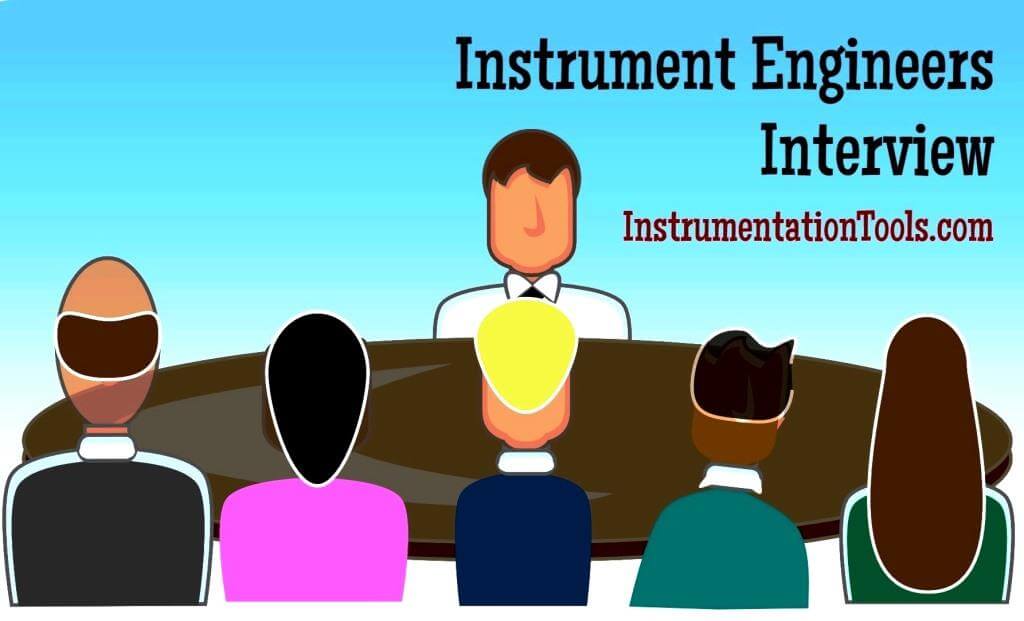
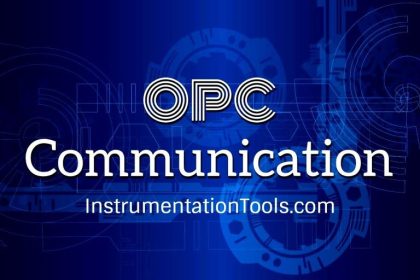



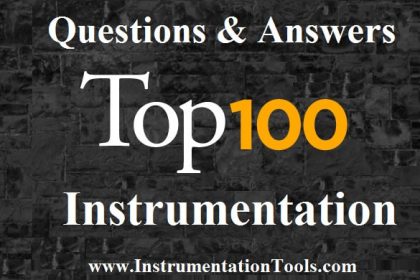


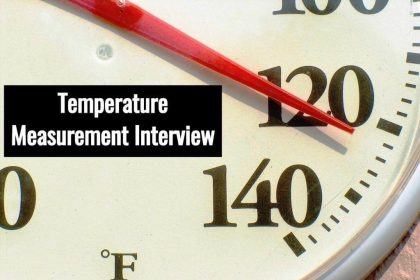
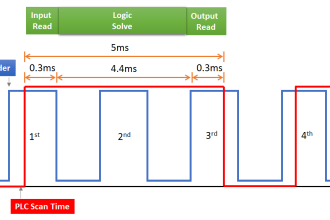
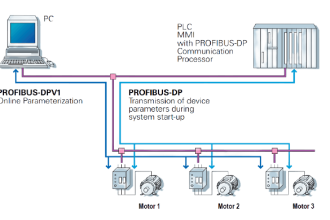
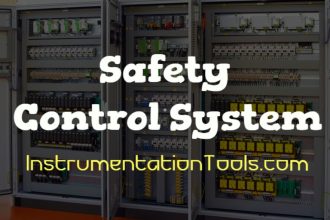
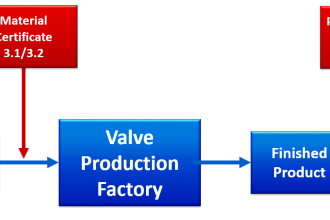
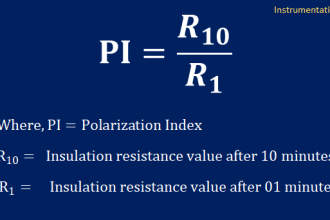

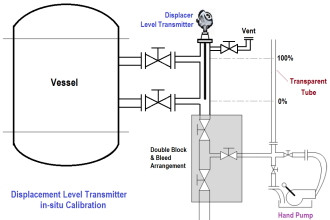

As an Instrumentation Engineer, I have nothing to say but…Thank you!
You are doing a great deal for this industry.
Keep up the good work!
Any whatsapp group of instrument related discussion plz add me .8460681831
pls share interview questions and answers for the Instrument engineer